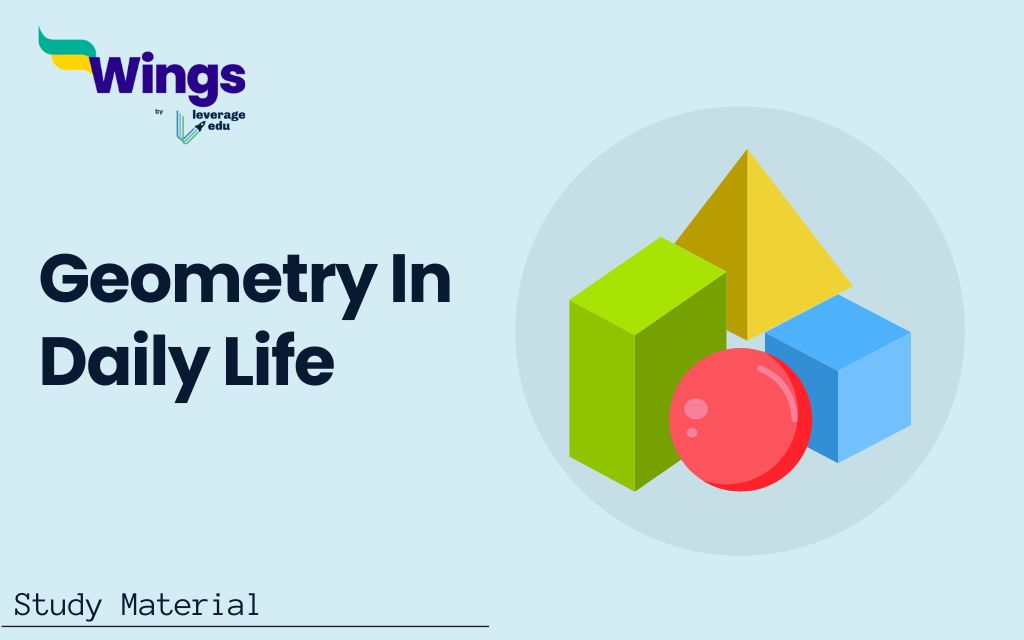Geometry is an ancient and fundamental branch of mathematics. It applies not only to mathematical equations but also to everyday life. This is the study of various shapes and sizes, as well as spatial characteristics. In this section, we will look at the application of geometry in daily life.
Contents
What is Geometry?
Geometry is a part of mathematics that studies the shapes, sizes, angles, and alignment of figures, as well as their features. It is one of the oldest sciences in existence, dating back to the Egyptian civilization. As part of their geometry class, children are taught about basic shapes, their properties, different formulas, areas and volumes, and how to draw different shapes using different geometrical tools such as rulers and compasses.
Also Read: Main Branches of Mathematics Tree
Application of Geometry in Daily Life
Geometry may be seen in many aspects of our daily life, including art, architecture, sports, and nature. Some of the applications of geometry in everyday life are discussed below.
Nature
Nature provides one of the most powerful examples of geometry in everyday life. Flowers, leaves, bark, and other natural objects have a variety of geometric shapes and sizes. A walk in the ground can help you discover different 2D and 3D shapes. One of the best examples of geometry is the hexagonal structure of a beehive.
Art
Art is related to mathematics since it includes a variety of shapes, sizes, and patterns. There are several painting perspective techniques that provide a 3D view in a 2D display. As a result, geometry plays a vital role in the art form.
Sports
Sports include a variety of geometric shapes and concepts. Children who play sports such as football, cricket, and badminton excel not only in their sport but also in mathematics, particularly geometry. This concept helps them to understand the positioning and angle of team members and the sports objects.
Architecture
Geometry is fundamental to the design and building of various structures. Looking closely at the monuments, we can see numerous angles, lines, and shapes. In our daily lives, we come across many buildings that were constructed using the principles of geometry.
Computer Graphics
Computer graphics are made up of a variety of lines, angles, forms, and figures. It is one of the most common applications of geometry in everyday life. All electronic devices, such as laptops, smartphones, and cameras, use the principle of geometry. Geometry plays an important role in computer games also.
Benefits of Geometry in Daily Life
Geometry has practical applications in daily life, which is why it is important for students to lean and understand it.
- Geometry is important to students because it improves their logical reasoning, analytic and critical thinking, and problem-solving skills, all of which contribute to their overall growth.
- Geometry allows students to learn shapes and figures through real-life examples, leading to their practical development.
- Geometry is a key aspect of the construction process. It helps students understand the designs and materials that should be used for the foundation of a shape.
- Geometry helps in the knowledge of maps and spatial relationships, making it easier to navigate from one location to another.
- Geometry is useful for creating strategies and understanding the movement of players and objects in sports such as basketball, soccer and billiards.
Also Read: Concept Of Parallel Axis Theorem
Geometric Shapes in Daily Life
When you look around, you will see a variety of shapes and patterns that relate to the concept of geometry. From simple everyday products like television to complex architectural structures like monuments and buildings, everything follows the principle of geometry. All of the objects around us that are made up of lines and angles are 2D or 3D geometrical shapes. 2-D shapes are flat pieces like circles, squares, and triangles, whereas 3-D shapes occupy space and can be found in the world like cubes and cuboids.
Some of the geometric shapes found in our daily lives are:
- Circles: These shapes can be found in the form of wheels, plates and coins.
- Spheres: These shapes are in three dimensions such as soccer balls, globes and decorative items
- Triangles: These shapes can be seen as pyramids, warning signs, patterns, logos and decorative elements.
- Cube: This is seen as the dice, boxes and storage units.
- Cylinder: CYlinder can be present in daily life as cans, bottles, tubes, and paper rolls.
- Cones: It can be found in the form of ice-cream cones, party hats and funnels.
Geometric shapes exist all around us. Understanding their concept and the principles used can help us better understand our world. It also improves our problem-solving skills, creativity, and efficiency.
Related Reads
FAQs
Geometry is a part of mathematics that studies the shapes, sizes, angles, and alignment of figures, as well as their features. It is one of the oldest sciences in existence, dating back to the Egyptian civilization. As part of their geometry class, children are taught about basic shapes, their properties, different formulas, areas and volumes, and how to draw different shapes using different geometrical tools such as rulers and compasses.
Geometry may be seen in many aspects of our daily life, including art, architecture, sports, and nature. From the part of nature to its inclusivity in arts and sports to the complex construction of monuments and buildings, there are various aspects where geometry can be found in our real life.
Geometry is important to students because it improves their logical reasoning, analytic and critical thinking, and problem-solving skills, all of which contribute to their overall growth. It allows students to learn shapes and figures through real-life examples, leading to their practical development.
This was all about the “Geometry in Daily Life”. For more such informative blogs, check out our Maths Section, or you can learn more about us by visiting our Study Material Section page.
 One app for all your study abroad needs
One app for all your study abroad needs














